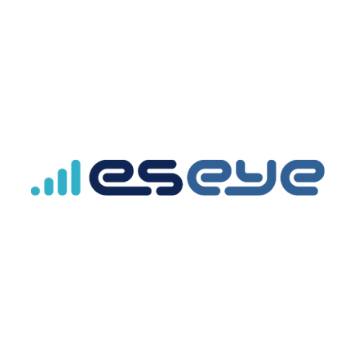Blogs
20 May 2024
Reading Time: 2 mins
Blogs
20 May 2024
Reading Time: 2 mins

Eseye
IoT Hardware and Connectivity Specialists
LinkedInThis article was written by Nikola Djuric for DesignRush.
When I think of IoT, I imagine all sorts of tech solutions that enable smart devices we use daily to communicate with each other, making our lives as easy as they can be.
One of the companies responsible for ensuring these connections remain smooth is Eseye – a 17-year-old business assisting tech giants solve the most complex tasks when it comes to IoT connectivity (from Shell to Amazon and Costa Coffee).
I had the pleasure to talk to Eseye co-founder Paul Marshall about what their work means for growing the smart cities we live in.
Who is Paul Marshall?
As the co-founder and CCO of Eseye, Paul focuses on ensuring that the development, operations, and support teams deliver solutions that work faultlessly in the IoT world. Paul previously co-founded CompXs with Ian Marsden and developed the world’s first IEEE 802.15.4 radio. Before, Paul served as a radio designer at IT giant Philips.
Key benefits of smart cities
There are two key factors the Eseye team focuses on in developing smart-city solutions – security and convenience.
By focusing on them, Eseye has helped city councils achieve cost savings, become greener, and improve standards of service through the use of innovative technology.
Here’s how exactly the IoT technology enhances the business opportunities in smart cities:
Improved resource management
With reliable IoT connectivity, smart cities can offer creative services to businesses.
“For instance, connected street lights can adjust their brightness based on pedestrian traffic, while smart parking systems can help drivers locate available parking spots in real-time. This fosters a conducive environment for businesses to develop new products and services tailored to the needs of smart city residents,” he explains.
Innovative smart infrastructure
With reliable IoT connectivity, smart cities can offer creative services to businesses.
“For instance, connected street lights can adjust their brightness based on pedestrian traffic, while smart parking systems can help drivers locate available parking spots in real-time. This fosters a conducive environment for businesses to develop new products and services tailored to the needs of smart city residents,” he explains.
Data-driven insights
The IoT connectivity allows smart cities to gather real-time data from a wide range of sources, in which city administrators can gain valuable insights into urban trends.
“This approach allows them to make informed decisions and streamline operations, enhance public services, and support urban planning. Meanwhile, businesses can harness this data to gain market intelligence and make strategic decisions that align with the evolving resident needs.”
There are two main reasons why businesses should consider adapting their offering to these technologies:
We understand that smart cities leverage IoT technology to improve people’s lives.
Here are some of the biggest trends that will mark the industry in the upcoming years, which businesses can use to get inspired to offer new products and services:
However, Paul claims there’s a disparity in the maturity of smart cities across the globe:
“Cities like Singapore and Barcelona, Spain are leading the way in implementing advanced technologies and services, while others have installed smart city elements in a more piecemeal fashion.”
“In the absence of integrating various smart city services and allowing them to share data, these solutions can only solve a single problem, rather than work together to map each smart city’s performance.”
Business fail to reach set standards
Eseye’s 2023 State of IoT Adoption survey (gated) found that only 1% of businesses achieve highly resilient connectivity. Achieving above 98% should be the standard in today’s high-tech environment.
“Imagine IoT health devices losing their connection and the impact that might have on life, or an EV charger failing because of defective connectivity and the millions of dollars in revenue lost as a result, not to mention stranded drivers or the impact on brand reputation,” Paul explains.
He also adds that, ideally, you should be able to seamlessly switch between different service providers over the air (OTA) to ensure device availability and avoid disruption.
Speaking about other challenges affecting the market, Paul tells me that many businesses struggle to assess the maturity of their IoT project, readiness for deployment, and the best route to success.
Surveys consistently find that 80% of IoT projects don’t reach successful deployment
Connectivity issues that can be traced back to the IoT hardware have caused headaches for 72% of the healthcare sector.
Given that connected products in the healthcare industry monitor critical elements such as human biomarkers to help patients manage their chronic conditions, any connectivity downtime can have devastating effects.
Furthermore, Paul says that EV chargers and smart grids run into trouble more than most other industries, with 71% admitting their IoT devices are failing to connect due to a hardware issue.
“Connectivity downtime poses a real threat to an EV charging provider’s business model – every minute the charger fails to connect could result in lost revenue and customer churn. To minimize this risk, charge points need to be connected by design and resilient to technical failure.”
“Eseye’s IoT Readiness Level (IRL) Index provides a technical standard that allows organizations to assess their device maturity and compare project performance with other businesses in their industry,” Paul concludes.
As with any other important work, taking proactive steps early in an IoT project means avoiding lengthy and costly delays later.

Eseye
IoT Hardware and Connectivity Specialists
LinkedInEseye brings decades of end-to-end expertise to integrate and optimise IoT connectivity delivering near 100% uptime. From idea to implementation and beyond, we deliver lasting value from IoT. Nobody does IoT better.